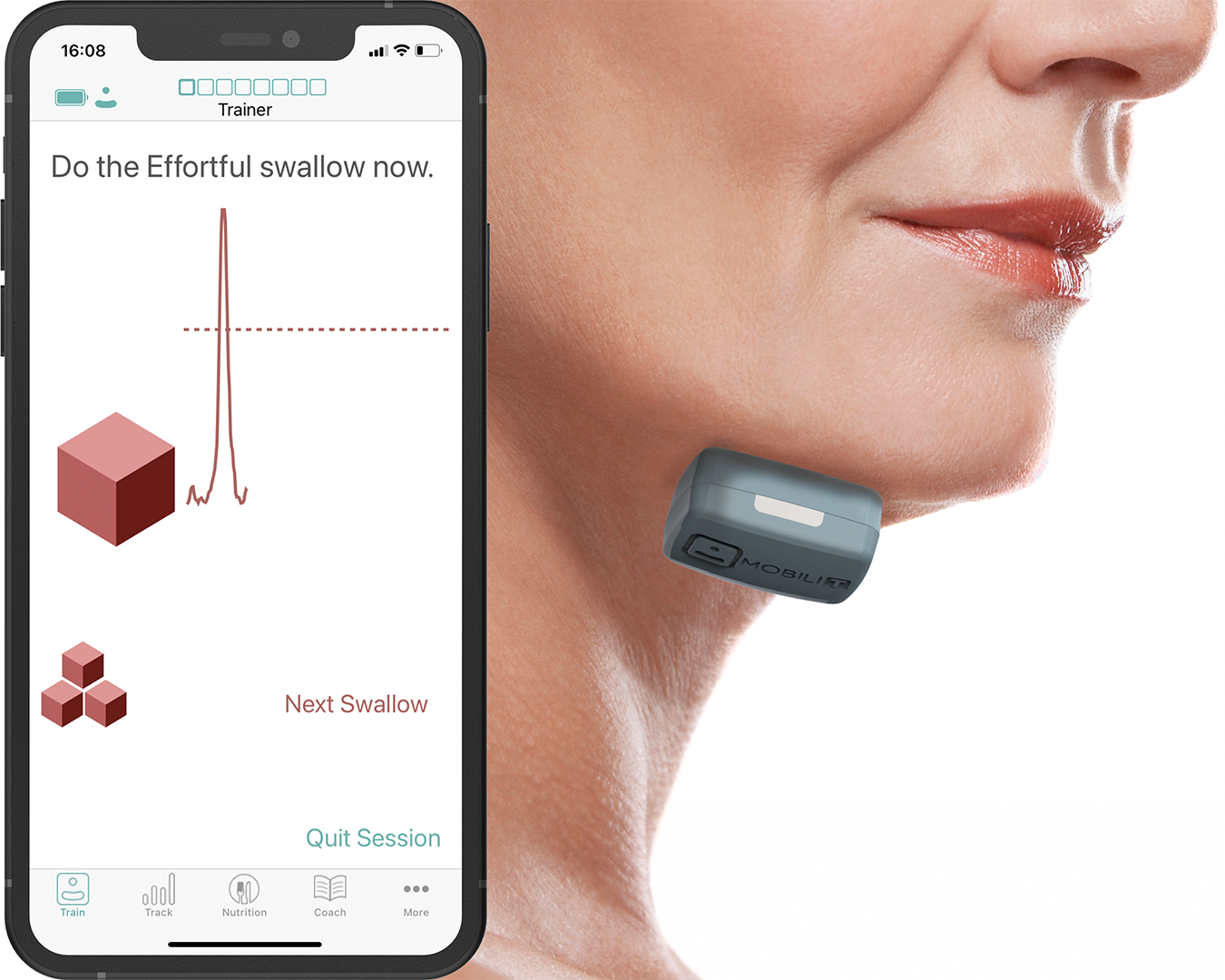How biofeedback can help you teach swallowing exercises to your patients
Read on to hear how Mobili-T helped Haley save time in her sessions and her patients to move more confidently toward their swallowing rehabilitation goals
Summary
Haley is an S-LP working with patients with dysphagia (swallowing difficulties). Haley and her team were looking for a tool that would help their patients learn their swallowing exercises more effectively. Better completion of exercises improves chances of better outcomes. Biofeedback is known to improve a patient’s understanding, so she was searching for biofeedback that was affordable, portable and easy-to-use.
Faster patient understanding of exercises
Improved completion of exercises at home
Time saved in therapy
Meet Haley
Since launching Mobili-T in the USA two years ago, we have had the pleasure of meeting with keen clinicians who are early tech adopters; they embrace new technology before most other people do. Haley is one of those Speech-Language Pathologists (S-LP). She lives on the cutting edge of her field and works tremendously hard to bring innovation to her clinic, patients and colleagues. Haley works in inpatient acute care, as well as in an outpatient clinic, where she manages patients with dysphagia. We recently caught up with Haley to find out more about how Mobili-T is shaping her practice.
Haley’s team was on the hunt for a solution:
A large part of Haley’s practice is teaching her patients how to perform rehabilitation exercises to address dysphagia. Haley’s team was looking for a solution that would help them teach patients how to perform certain swallowing exercises.
“What do you mean? Swallow with effort?”
“Swallow and hold what?
If you have tried to teach anyone the effortful swallow or Mendelsohn maneuver, you may have also had your fair share of puzzled looks and will understand why Haley and her team were searching for more tools. This is a common experience amongst our clinicians and one of the reasons why surface electromyography (sEMG) biofeedback is often used as a teaching tool.
Haley and her team were discouraged when they saw the biofeedback devices on the market because of how expensive, cumbersome and complex they were. They wanted something easy-to-use and small enough to carry around and try with multiple patients. Knowing what they wanted, Haley continued her search, found True Angle and learned that we were looking for S-LP partners in an Innovation Partnership Program, designed to get Mobili-T into the hands of tech-forward clinicians. Haley reached out, and it was an instant connection. This is how her facility’s journey towards better dysphagia care with Mobili-T began.
Mobili-T revolutionizes patient education and coaching:
Before purchasing Mobili-T, Haley gave her patients verbal instructions on how to perform their swallowing exercises. Visual cues consisted of pointing to the neck or using fingers to feel the movement of the thyroid while referencing posters or photos of anatomy for correlation. She used pen and paper to track the number of repetitions. Haley shared that she spent a portion of her therapy sessions educating and re-educating patients on how to perform the exercises correctly.
Now, Haley simply places the Mobili-T device under their chin and opens the app on an iPad. Patients can immediately see how their muscles activate on the screen, and Haley can use this visual biofeedback to instruct and shape exercises correctly. For example, Haley has seen patients quickly learn to differentiate between two different exercises: the Mendelsohn maneuver and an effortful swallow. This clarity on proper exercise performance and understanding the expectations have improved patients’ ability to continue exercising at home. Because patients are more proficient and confident in what to do, they are able to carry over and maintain their exercise programs.
Haley treats mainly patients between 50 and 70, and has seen a lot of success in having her patients adopt technology in their therapy programs. This is a nice reminder to all of us to present our patients with the option of advanced modalities of treatment delivery, regardless of age, gender and background.
Mobili-T increases productivity
Haley noted that when she uses Mobili-T in her sessions, her patients appear to understand what they are doing more quickly. This means her team may end up spending less time training patients on how to perform the exercises and more time actually doing them. She has observed a decreased need for re-teaching and explanations of rehabilitative exercises for swallowing, resulting in more productive and efficient sessions. This means her patients get more exercise repetitions during their therapy sessions. It also frees up valuable time in her schedule to see more patients. Saving time and helping patients move more confidently toward their goals have been invaluable improvements in her team’s ability to provide quality dysphagia care.
We are excited to see our relationship with Haley grow beyond our Innovation Partnership Program, as she recently purchased the Mobili-T for another facility within her network. From Haley’s story, we hope to show how S-LPs using the Mobili-T as an adjunct to therapy can make their sessions more productive and diversify the modalities they can offer to their patients.
At True Angle, we love to hear and share stories like Haley’s because it keeps us connected with the people we are trying to help.

Mobili-T® is a small, portable system that utilizes an under-the-chin sensor and connected mobile application for patients & clinicians to visualize swallowing exercises. Clinicians can use the Mobili-T in the clinic, and send them home with patients for continuity of care. Mobili-T continues to evolve as a result of our high-performing team members, who are all critical thinkers and who thrive on solving real-world problems with input from our patients and clinical users.
